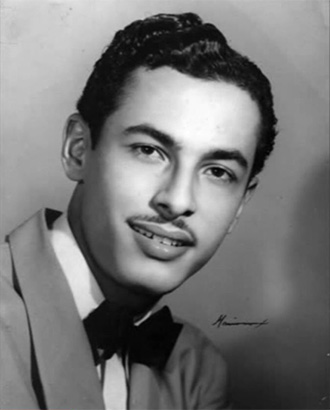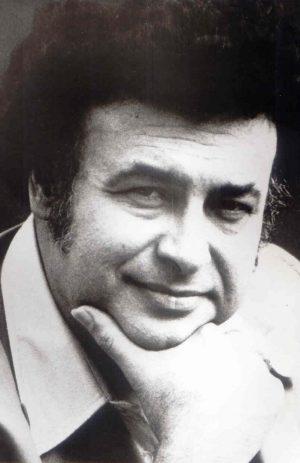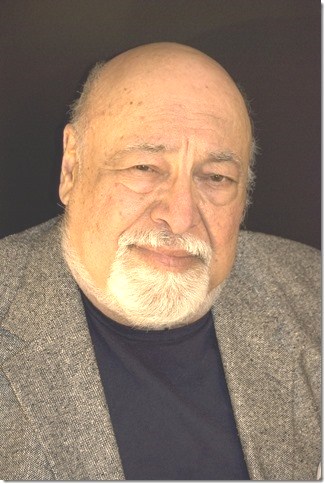Jesús Quiñones Ledesmaaka Ricardo Ledesma



Quiñones Ledesma started studying music at the Puerto Rico University early, at age 13, and graduated already three years later. Then
he moved to Milano, where he studied for six more years with Apollo Granforte.
He made his debut in 1955 at the Teatro Nuovo in Milano, in Lodoletta, under the name Ricardo Ledesma. Then he got several contracts in
Italy, Switzerland, France and Turkey – and returned to Puerto Rico in 1956. He appeared in San Juan, Havana and Caracas. From 1958, he
ran his own musical production company, producing shows for radio and TV; he had a daily radio program on music, which made him very popular
in Puerto Rico. As a tenor, he focused on the dramatic repertory.
In 1973, he founded Aptel, a non-profit organization that produced concerts as well as staged opera performances all over Puerto Rico,
often with Quiñones in the tenor lead role: Il trovatore, Otello, Cavalleria rusticana and Pagliacci,
L'elisir d'amore or Il tabarro.
In 1977, he made his US mainland stage debut (he had already given concerts there previously), as Canio in Scarsdale NY. In 1979, he relocated
to New York City, and sang now primarily in the USA (opera in San Francisco and Reno, for instance; his concert career peaked at Carnegie
Hall). He also returned to Italy and Venezuela, and performed in Madrid, Málaga and Sevilla.
He retired as a singer in 2005 and continued to run Aptel until 2011. (That it was not a good idea to go on singing so very long is evidenced
by several of the below recordings; if you start from the top, you'll easily understand why François Nouvion loved Quiñones
– if you start from the bottom, you won't.) He also taught voice, and composed a lot of songs.
Reference 1 and picture source (bottom); reference 2 and picture source (top); reference 3 and
picture source (center); reference 4: Scarsdale Inquirer, 13 October 1977
Review of Il trovatore with Jesús Quiñones LedesmaThe opera starts powerfully with Pedro Morell as Ferrando. He offers strong support during the rest of the opera. The other discovery is the soprano Aura Norma Robledo (Leonora), who has a wonderful exciting voice. In the notes, Jesús Quiñones Ledesma renders her homage posthumously. The Tacea la notte placida is both lyrical and exciting. She is received rapturously by the audience. In D'amor sull'ali rosee, she displays sensibility and fine top notes to great acclaim. She is again thrilling in Tu vedrai, while the duet with Héctor López displays pure vocal excitement. In Deserto sulla terra, Jesús Quiñones Ledesma immediately takes possession of the role and impresses right away. He makes the necessary vocal impression in Ravvisami: Manrico io son, Che tardi? ... Del carnefice consegna. The second scene ends with an exciting trio with the addition of Héctor López as Luna. The audience shows again their justified enthusiasm. During his scene with Azucena, Quiñones Ledesma excellently emphasizes the meaning of the words, for example Io caddi! Però da forte io caddi. His Mal reggendo all'aspro assalto is finely sung. Ah sì, ben mio has both lyrical qualities and strength, while as expected Di quella pira brings down the house. He offers a fine Miserere with Aura Norma Robledo, exhibits the necessary restraint in the duet Ai nostri monti, while exhibiting the necessary dramatic heft in Parlar non vuoi. Héctor Lopez displays good lyricism in Il balen del suo sorrriso and power in Per me ora fatale. He is strong in his duets with Azucena and Leonora. The Azucena, Darysabel Isales, is also on a high level in Stride la vampa and Condotta ell'era in ceppi. The duet with Luna is exciting and rapturously received. The conductor is, another new name to me, Randolfo Juarbe, who offers strong support. The audience, like me, is very excited by the whole performance and shows it at all the curtain calls.
Reference: Il trovatore issued by Aptel, Inc. in 1998 |